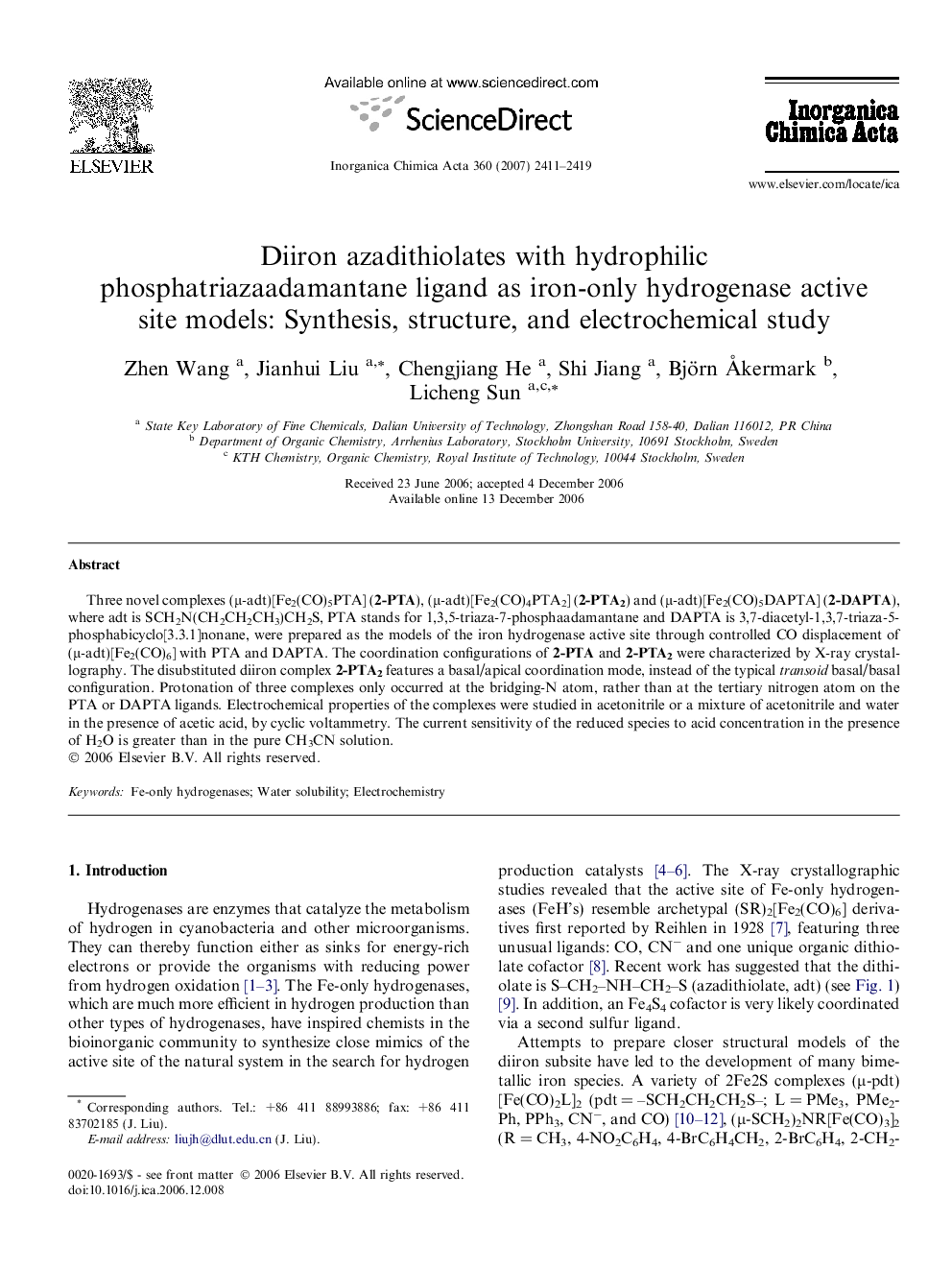| Article ID | Journal | Published Year | Pages | File Type |
|---|---|---|---|---|
| 1309778 | Inorganica Chimica Acta | 2007 | 9 Pages |
Three novel complexes (μ-adt)[Fe2(CO)5PTA] (2-PTA), (μ-adt)[Fe2(CO)4PTA2] (2-PTA2) and (μ-adt)[Fe2(CO)5DAPTA] (2-DAPTA), where adt is SCH2N(CH2CH2CH3)CH2S, PTA stands for 1,3,5-triaza-7-phosphaadamantane and DAPTA is 3,7-diacetyl-1,3,7-triaza-5-phosphabicyclo[3.3.1]nonane, were prepared as the models of the iron hydrogenase active site through controlled CO displacement of (μ-adt)[Fe2(CO)6] with PTA and DAPTA. The coordination configurations of 2-PTA and 2-PTA2 were characterized by X-ray crystallography. The disubstituted diiron complex 2-PTA2 features a basal/apical coordination mode, instead of the typical transoid basal/basal configuration. Protonation of three complexes only occurred at the bridging-N atom, rather than at the tertiary nitrogen atom on the PTA or DAPTA ligands. Electrochemical properties of the complexes were studied in acetonitrile or a mixture of acetonitrile and water in the presence of acetic acid, by cyclic voltammetry. The current sensitivity of the reduced species to acid concentration in the presence of H2O is greater than in the pure CH3CN solution.
Graphical abstractThree diiron azadithiolates with hydrophilic phosphatriazaadamantane ligand were prepared. Their structures are characterized by 1H NMR, IR spectra and two of them further are determined by X-ray analysis. Protonation occurred only at the bridging-N atom, rather than the N atom on the ligands. Their electrochemical properties are studied in acetonitrile or a mixture of acetonitrile and water.Figure optionsDownload full-size imageDownload as PowerPoint slide
